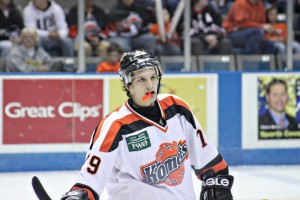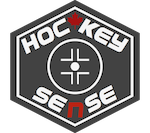
Photo by: thepeachmartini
Concussions in hockey have been a hot topic around the rinks the last few years and rightly so with the number of high profile, professional hockey players missing substantial playing time. It can be quite a concern to players and parents in minor hockey when you consider that players like Sidney Crosby who is receiving the best medical care possible and still hasn’t been able to play a single game after sustaining his head injury on New Year’s day.
The best thing that a coach, parent, and older player can do is get informed. A popular suggestion I hear a lot is that you need to wear a mouthguard to reduce the chances of getting a concussion. In fact this was one of the key reasons why policy makers in Canada decided to make mouthguards mandatory. However, this is unfortunately not the case.
Now don’t get me wrong. Mouthguards are fantastic for reducing oral and dental injuries including lacerations to the mouth and lips. And for this reason alone, they should be used, but there are only a few studies showing that mouthguards reduce the severity of concussion (e.g., Bensen, Hamilton, & Meeuwisse, 2009) not the frequency with which they occur. There is no credible evidence that suggests wearing a mouthguard will reduce the likelihood of a sustaining a concussion.
So why is this important to know if mouthguards are still beneficial? I’ll give you two reasons.
First, understanding the capabilities of the equipment a player uses is crucial for that player to understand how to protect themselves and their opponents. If you believe that you can’t get a concussion while wearing a mouthguard you may choose to play in a manner that exposes you to greater risk. For example, checking with your head (don’t laugh, I’ve seen it happen). You may also believe that since your opponent is protected from sustaining a concussion because they are wearing a mouthguard, it’s okay to check them in the head.
Second, some of the signs and symptoms of concussion are subtle. It can be difficult for everyone involved (player, coach, parent) to recognize when a player has sustained a mild concussion, or a bell ringer. If you think that the mouthguard provides adequate protection against concussion you will be less likely to consider it when you notice that the player just doesn’t look right. This is particularly tough with younger players who don’t necessarily have the vocabulary to explain how they are feeling. Missing this could result in further injury or potentially a more severe injury in a future practice or competition.
Right now, knowledge is our best defence against concussion in hockey. Playing smart, heads up hockey and learning how to safely give and take checks are the best ways to avoid them.
I’d like to get your thoughts on mouthguards and concussions. The more discussion we have the more information we can share with each other. Please leave a comment.


Leave A Comment